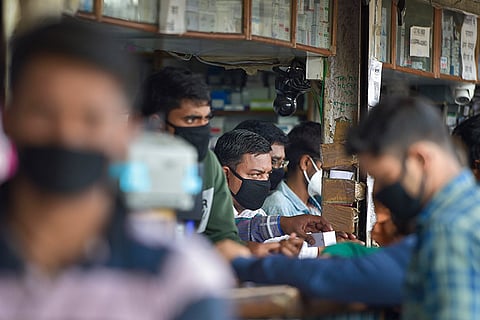

What the entire globe is grappling with is a new strain of the coronavirus, which means our immune system is being exposed to an entirely new virus. While the health officials have identified the common symptoms (coughing, sneezing, shortness of breath, fever, giddiness, headache) and the mode of spread (droplets from a cough or sneeze and surface contamination), what remains still a mystery is, how can an asymptomatic person infect others, and can such persons take the test to confirm if they are infected.
23-year-old Abdul (name changed) did not exhibit any symptoms when he reached Kerala from China’s Wuhan (the first epicentre of the outbreak) on January 24 and even when he was declared the second patient in India to be tested positive for COVID-19. Similarly, a 20-year-old woman in China’s Wuhan infected five of her family members in January, without any illnesses even after a month, reported Jama Network, a peer-reviewed medical journal, which traced the travel history of the family. In the US, too, many of the first patients who tested positive had no previous exposure.
Scientists across the globe are yet to find a definitive, scientific answer to how an asymptomatic person can be a carrier of this new virus. There are other cases, too, where a person is asymptomatic for a few days because the virus is in the incubation period — the interval between contracting the virus and showing symptoms, which extends up to 14 days, with a median of five to six days.
This holds relevant as a lot of passengers who entered India, especially during the initial weeks of the outbreak, started showing symptoms only a week after their arrival.
This scenario raises several pertinent questions.
First, should the passengers from an affected country (including China, Italy, Iran and South Korea) get themselves tested? Yes, if you have come from a country, which has reported a high number of coronavirus cases, contact your nearest local hospital or health desks at airports.
Second, would the hospital turn you away if you do not show any symptoms? Currently, a person is tested for the novel coronavirus, or is considered high risk, only if he/she has symptoms or has had exposure to a person who has been infected.
“As per the current guidelines, an asymptomatic person comes under criteria A and high-risk cases fall under criteria C. Persons under criteria A cannot be tested, even if the person insists,” said Dr Sheeja AL, District Medical Office, Pathanamthitta in Kerala, which has currently reported 19 active COVID-19 cases. “We won’t be able to handle the load. The results of suspected cases will also be delayed if so,” she told TNM.
Even if an asymptomatic person is tested, he/she will undergo the same test — swabs from the throat and nose are collected and sent to laboratories for testing. The result will take at least 24 to 48 hours, and as per the procedure, it requires at least two tests before the patient can be confirmed negative.
However, considering the worrying rise of positive cases in India (at least 88 including two deaths) and an overwhelming number of samples that are being tested daily, what passengers can do to help the government contain the spread and ensure the safety of those around them, is to quarantine themselves at home.
For example, as soon as Abdul, a medical student in Wuhan, reached Kerala, he self-quarantined, did not interact with his parents and used different utensils. When he realised his classmate in Wuhan was tested positive, he drove to the Alappuzha Medical College and remained in the isolation ward.
According to Dr Navin Dang, a microbiologist in India, ideally, all patients coming from these affected areas should and can be tested. “However, the test of the patient who is incubating the virus may come negative. So, the person should be home quarantined and can be tested five to six days later if there are symptoms. That is the only way to exercise caution,” he said.
And so, the most prudent procedure to follow at a time of crisis (read pandemic) is to cooperate with the officials, inform the health desks in airports, and self-quarantine at home for at least 14 days.
“If passengers declare themselves to local health officials and home-quarantine, we will call them daily to monitor their health. In case there are symptoms, an ambulance will be sent to bring the patient to a hospital,” said Dr Sheeja.